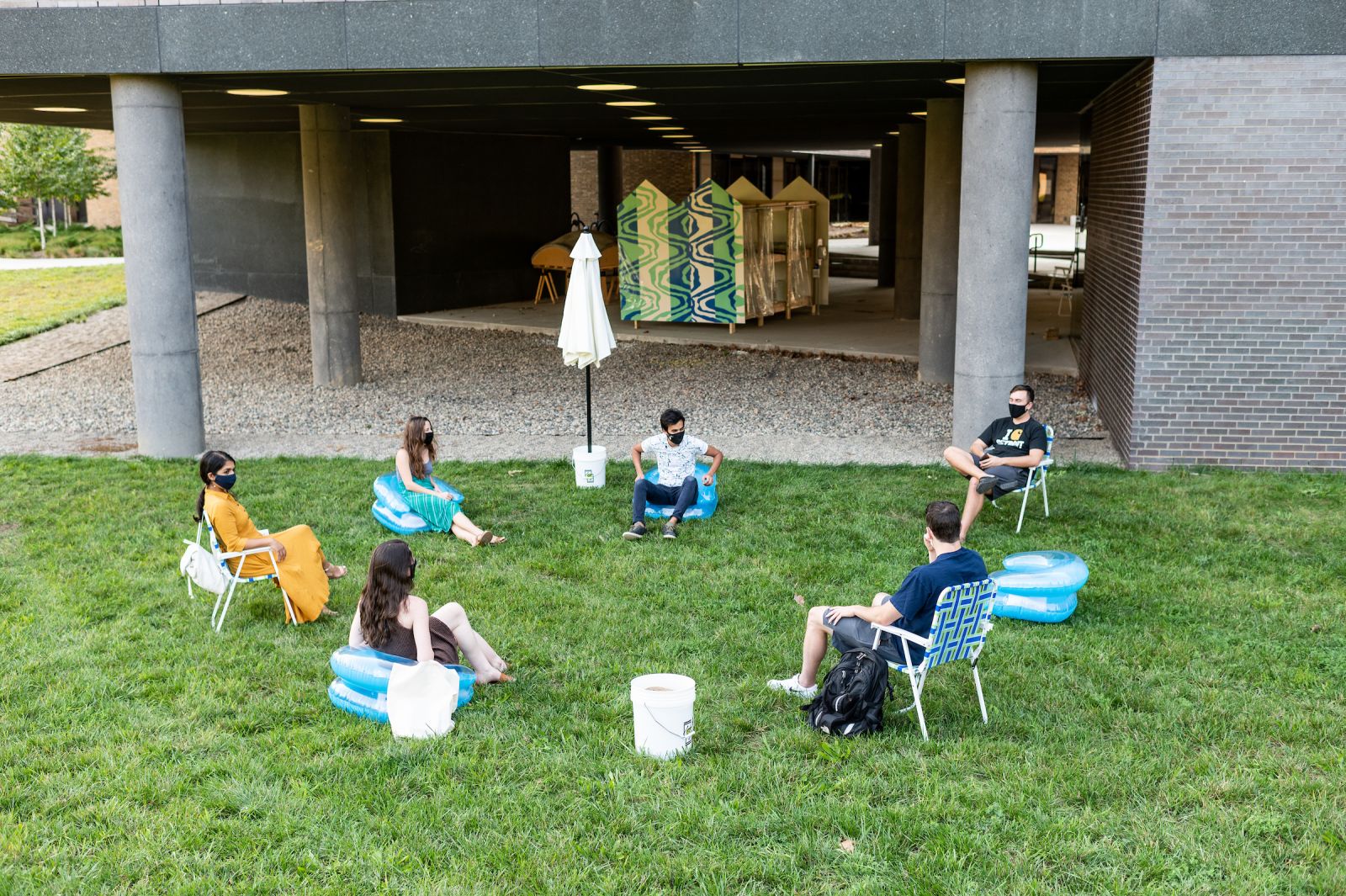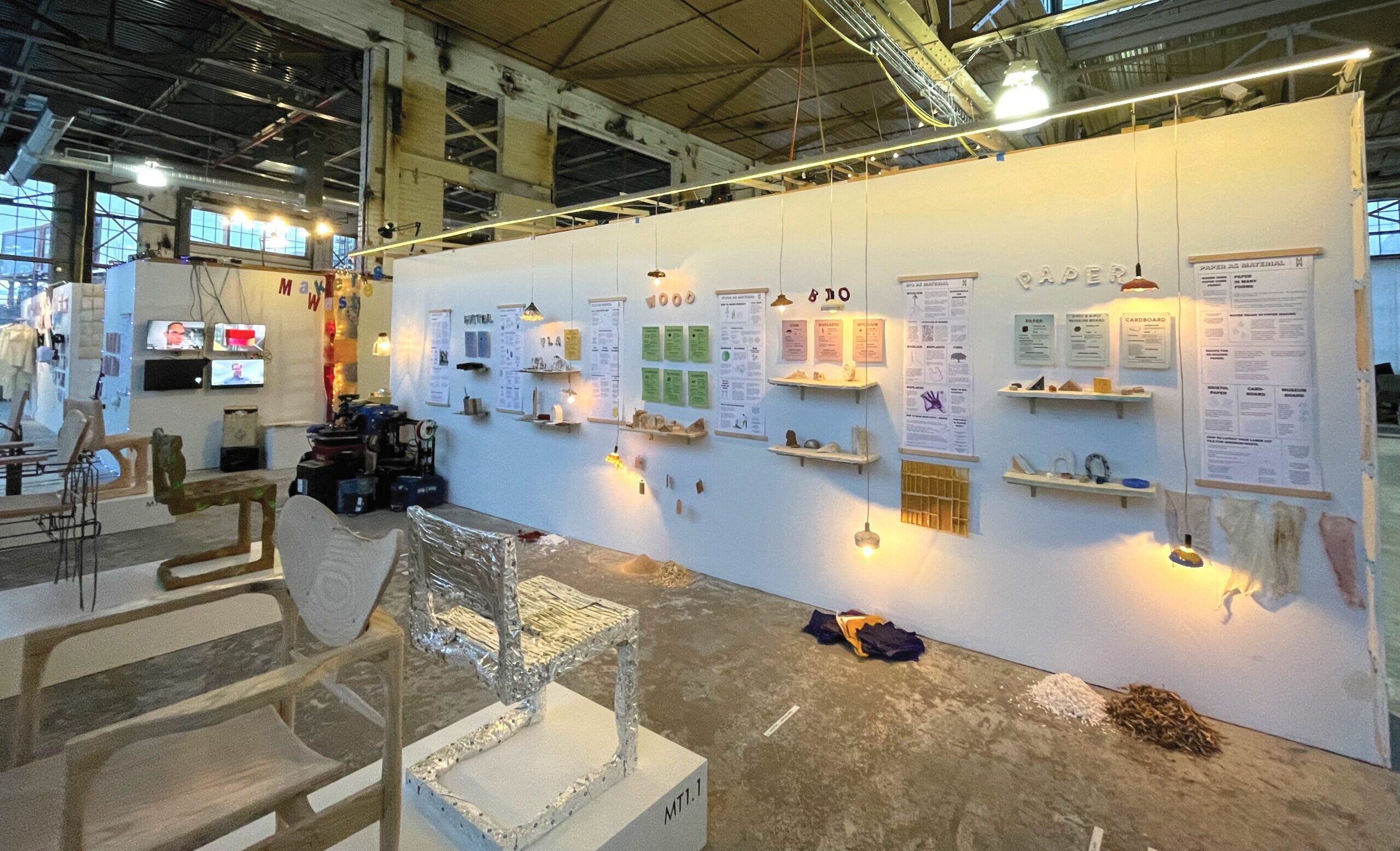During a typical fall at the University of Michigan, students are often in the courtyard of the Art and Architecture Building socializing, studying, and meeting as classes. Even though the coronavirus pandemic has made this fall feel atypical in many ways, Taubman College students and faculty members wanted to ensure that the courtyard retained its ability to be a community gathering space.
A group of faculty and students recently created an outdoor, socially distanced instructional space to activate the inner courtyard at the Art and Architecture Building, home of Taubman College of Architecture and Urban Planning and the Stamps School of Art and Design. The goal was to allow the university community to safely utilize the popular space by intuitively adhering to health and safety guidelines required by the pandemic.
Taubman College faculty and staff Jonathan Rule, Ana Morcillo Pallarés, Jacob Comerci, Anya Sirota, and Ishan Pal, M.Arch ’20, co-designed two large, health-informed work tables, which each accommodate up to 12 people and adhere to health and safety guidelines. Students Gary Zhang, Adrian DiCorato, and Kristina Cantarero assisted with the fabrication of the tables. Taubman College’s Digital Fabrication Lab (FABLab) and woodshop provided additional support.

The tables aggregate to form symmetrical clovers but can be disassembled into medium-sized ovals and individual fragments. They have spaces designed for umbrellas to provide shade. When the space is not occupied by a class, students, faculty, and staff can use the adaptable furnishing for informal, socially distanced gatherings.
Additionally, Taubman College faculty designed a “cabana” for the undercroft at the Art and Architecture Building. It will hold additional outdoor furnishings: umbrellas, lawn chairs, and inflatables. Students are free to bring these items to the adjacent hill, or “the beach” as it has been affectionately named, to use during study and conversation. A cleaning station is available to ensure safety.

“The table will be useful now, and it will be useful a year from now — it’s not a pandemic-specific artifact. That said, social distancing guidelines acted as a productive constraint, inflecting our design decisions,” said Comerci. “When the table is reconfigured, it will allow us to get nearer; when aggregated, the table’s scale and geometry intuitively inform us how to stay safe while being together. The outcome is informal, economical, and droll.”
The courtyard is available for use by both Taubman College and the Stamps School of Art and Design for instructional purposes through October 29, 2020. Book the space here.





